Speaking French to a Chinese Ai Device Funny
Luis von Ahn is a genius according to the MacArthur Foundation, but he feels pretty dumb when he tries to speak Portuguese. "I can read anything, and I can write almost perfectly, but I will not open my mouth," the CEO and cofounder of the foreign language-learning app Duolingo confesses to Fast Company. "The majority of people don't like sounding stupid, and this is one of the major impediments for learning a language."
Duolingo's solution, unveiled today, are new chatbots that let newbies practice conversations with artificial intelligence discussion partners instead of having to face real human beings when they are just starting out.
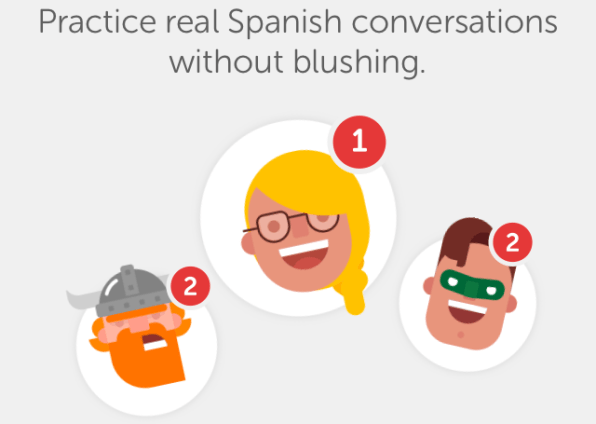
"Practice real Spanish conversations without blushing," promises the new module for von Ahn's native language. Duolingo, which claims over 150 million users since its launch in 2012, has also rolled out bots for French and German; and it intends to bring them to all 20 languages that the free app offers. (For niche languages like Irish and Welsh, Duolingo enlists volunteers to develop materials, and it may continue that practice with bot creation.) Bots are debuting in the iOS version first. Duolingo isn't announcing when the Android version is coming, other than saying "it won't take too long."
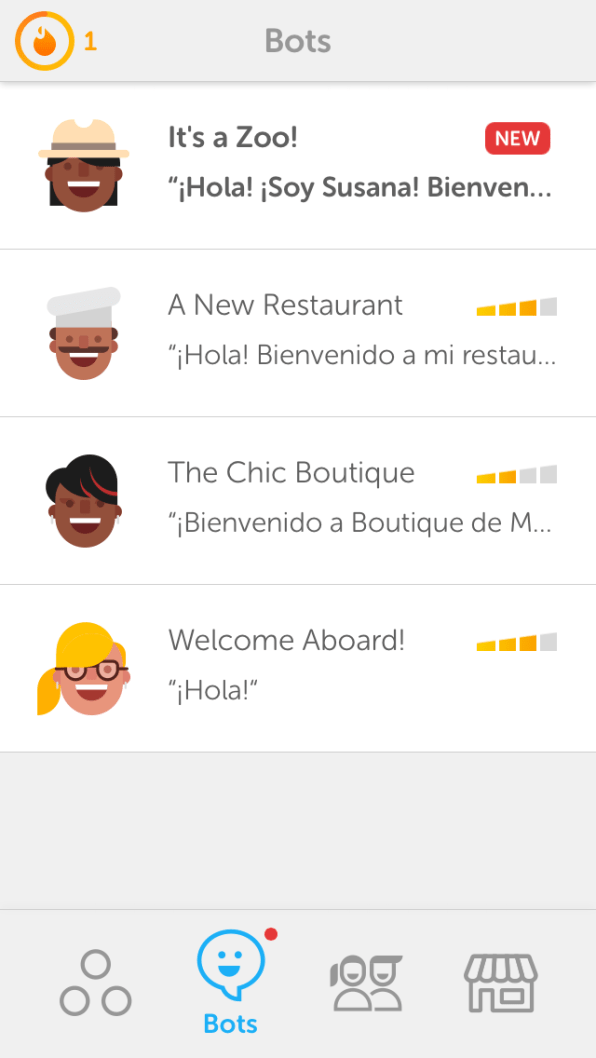
"For the last maybe three years, a lot of people have asked for conversation help on Duolingo," says von Ahn. Often they request conversation partners, like pairing an English speaker who wants to learn German with a German speaker who wants to learn English. "It's a very elegant version of the idea," says von Ahn. But as Duolingo looked into the idea over the past few years, it found that about three quarters of users hate the idea of talking to a stranger. "At some point we had this idea, well, it would be really cool if they could pair up with a computer as opposed to a stranger," says von Ahn, "because as far as we know, computers are not judging you yet."
He should know about how computers think. In 2006, at age 28, van Ahn won a MacArthur fellowship, known colloquially as the "genius" grant, in part for his work on cryptography. He developed the CAPTCHA test used to distinguish a human from a bot accessing a website by distorting text so that a human can still read it, but a machine can't. Von Ahn sold the subsequent company, reCAPTCHA, to Google in 2009. Duolingo has received $83.3 million in funding, mainly from Google Capital, and currently makes money mainly by providing English-language proficiency testing.
The bots, which Duolingo started developing about a year ago, don't yet solve von Ahn's concern about opening his mouth. While bots speak both in text and out loud, users at the moment can respond only in text. Speech recognition is coming "pretty soon," says von Ahn. "I would say sometime this year." Duolingo has already been using speech recognition in some of its other exercises, so it has the technology in-house.
Playful Chat
Those who have seen Duolingo will recognize its cheery, playful design in the new chatbots. The early ones I tried (in Spanish and French) feature shopping in a "Chic Boutique," visiting a new restaurant, and meeting some peculiar animals in a zoo. The dialogs are adorably illustrated and lightly sprinkled with humor. The chef, for instance, first shows you to a table with a broken dish covered in flies and asks if you like it. When the inevitable "No" answer comes, he replies, "This table is terrible. I'm very sorry," in the language you are practicing. The owner of the Chic Boutique recommends a purple hat. If you say no, she replies dejectedly, "What a shame, purple is my favorite color."
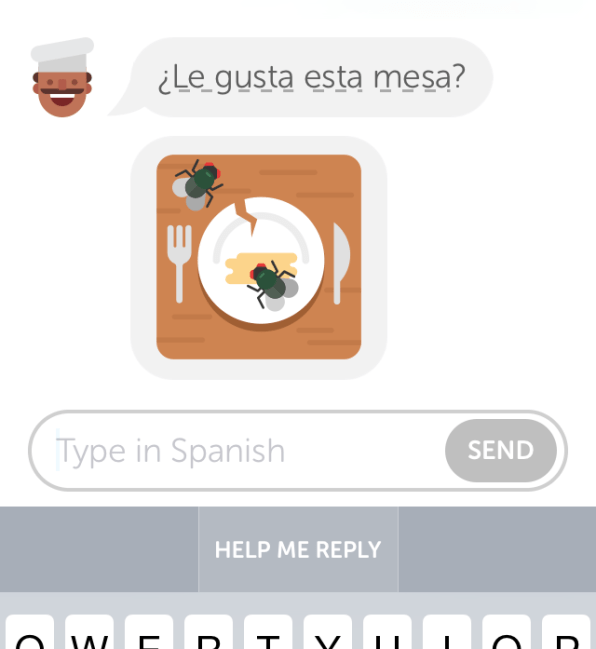
Duolingo is cautious about getting too clever. "When you're a beginner in a language, anything that you add makes things way harder," says von Ahn. "We can't work with wordplay. Any type of humor is very simplistic." The app makes a point of not leaving the user hanging. You can click on every word in the bot's dialog to see its meaning in your language. It also offers autocomplete to help with spelling, as well as suggestions if you get stuck. The zookeeper showed an image of a turtle munching on a carrot and asked me what it was eating. As I cluelessly started typing "Una ca…" the app saved me by suggesting "zanahoria." It also won't allow you to submit answers that don't make any sense, to avoid having the chatbot say something like "Huh?"
The dialogs do recognize user ability. Answering "Si, por favor," for instance, earns a bonus point over just answering "Si." Duolingo wants to make dialogs flexible to match the user's ability. Currently, this is pretty simple, such as tossing in phrases like "What's up?" instead of just "Hello," for users who show better proficiency. "What we actually want is that they get even more sophisticated," says von Ahn. "So that in the simpler version you just order a coffee and it says 'fine.' In the more advanced [version] you get into a fight with the barista."
Duolingo will have plenty of opportunity to experiment with bot dialogs. It intends to roll out a new one every two or three days for each language. These will include topical and seasonal dialogs, such as upcoming ones about voter registration and Halloween. "It's as if you are having conversations about stuff that day," says von Ahn.
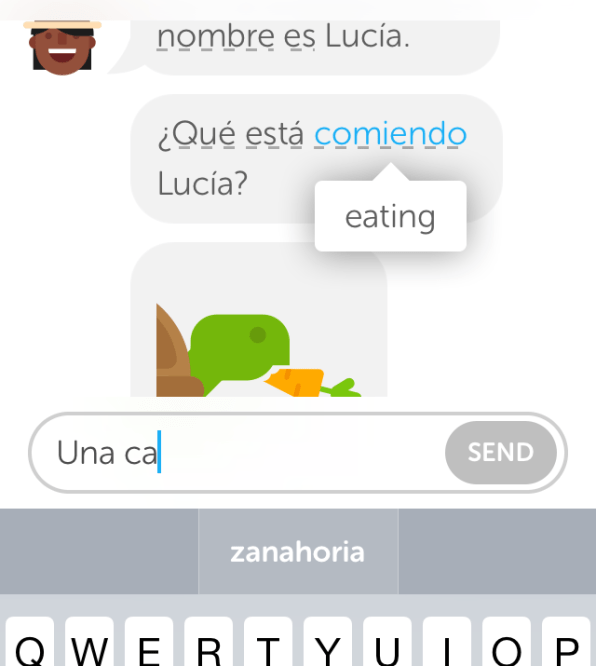
The company put a lot of work into automating its bot creation software, he says, so it can churn out new dialogs quickly. "When you do a conversation," says von Ahn, one of the hardest things is, you know, if I say 'Hello' to you, you could say to me like 'Hello,' 'What's up?,' 'What's going on?,' 'How's it going?'—hundreds of things." There are 390 of them in Spanish, for instance, all of which the creation tool lists as options for the bot writer to use. It recognizes variations on answers from students, including equally valid verb forms, such as the foreign-language equivalents of "I will" or "I'm going to." The tool suggests user answers that the bot creator can specify as acceptable, including "almost correct" options that can be allowed—with a note telling the user how to say it exactly right.
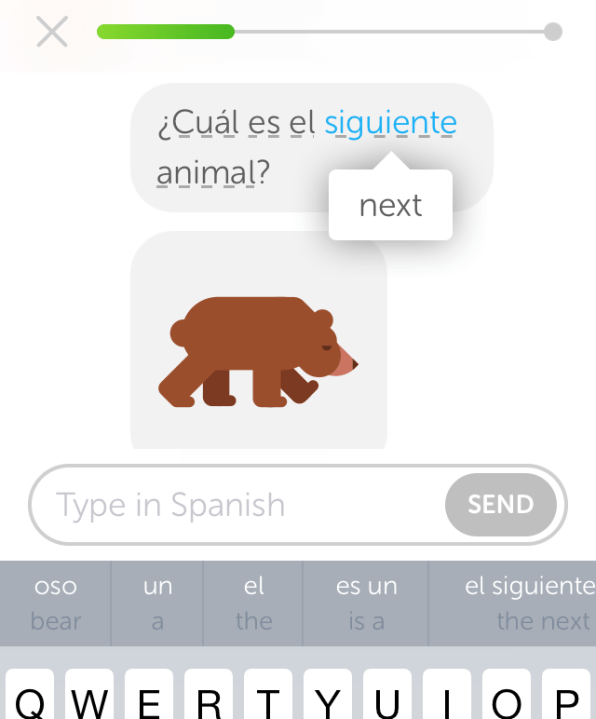
The software even provides the bot writer with statistics to show what works, like the percentage of users who quit after a particular question and the percentage that gave a particular answer. Duolingo already has some stats because it's been testing bots with a few users over the past three to four months. And the more users, the smarter the bots will get, says von Ahn. The system uses machine learning to analyze how students respond, which could for, instance, allow it to expand the list of acceptable answers.
No matter how good the bots get, eventually students will have to venture into the real world. Von Ahn recommends taking this step once people know a language well enough that they can easily come up with things to say. Duolingo is betting that chats with bots will get people to that stage faster. "For me, I'm very interested in the Portuguese one that will come out soon," says von Ahn.
schraderthisere01.blogspot.com
Source: https://www.fastcompany.com/3064388/these-chatbots-wont-judge-you-for-your-lousy-french
0 Response to "Speaking French to a Chinese Ai Device Funny"
Postar um comentário